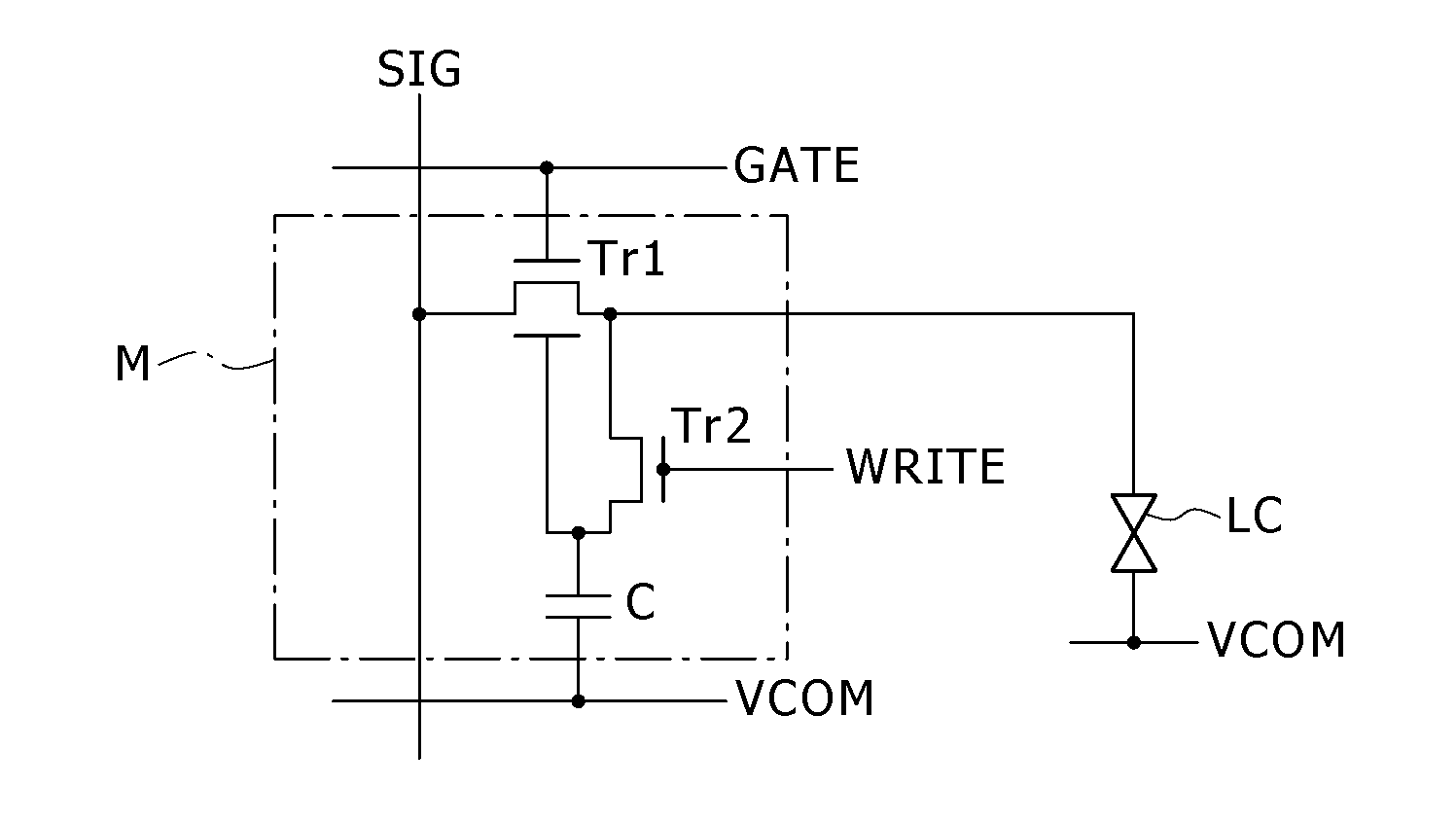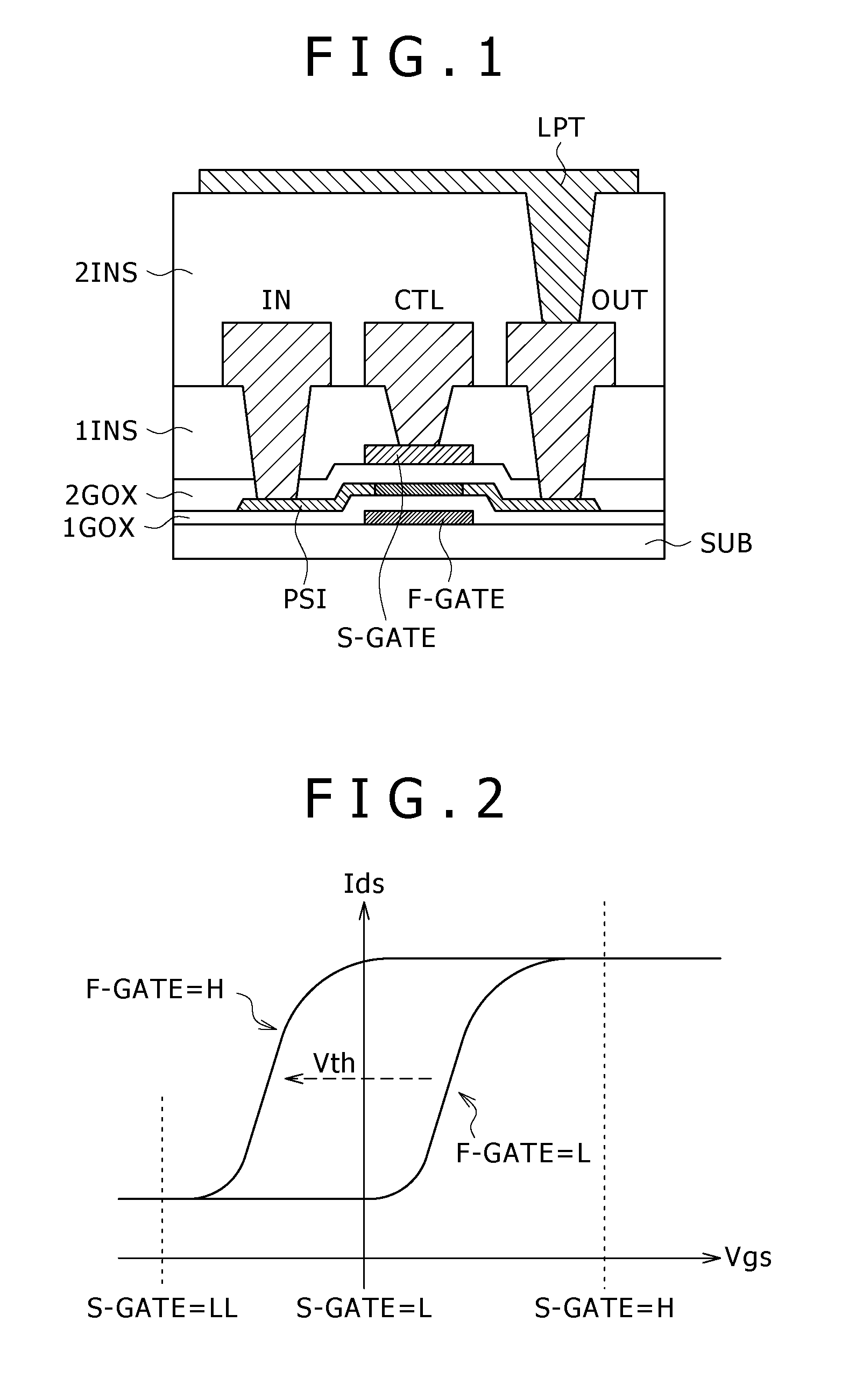Memory element and display device
a technology of memory elements and display devices, applied in the field of memory elements, can solve the problems of deteriorating display characteristics, unable to obtain bright screens, and most of the power consumption, and achieve the effects of reducing size, small area, and reducing power consumption
- Summary
- Abstract
- Description
- Claims
- Application Information
AI Technical Summary
Benefits of technology
Problems solved by technology
Method used
Image
Examples
Embodiment Construction
[0032]Embodiments of the present invention will be described in detail below with reference to the accompanying drawings. FIG. 1 is a schematic sectional view showing the structure of a memory element according to an embodiment of the present invention. The memory element according to the embodiment of the present invention is basically composed of a thin film transistor and a capacitor, and is formed over a substrate SUB. The thin film transistor has a semiconductor thin film PSI composed of polycrystalline silicon or the like, and a pair of gate electrodes F-GATE and S-GATE that vertically sandwich the semiconductor thin film PSI with the intermediary of insulating films 1GOX and 2GOX therebetween. The capacitor is connected to the first gate electrode F-GATE of the pair of gate electrodes, although not shown in the drawing. This capacitor can be obtained as follows. Specifically, the same conductive layer as the first gate electrode F-GATE is used as the first electrode of the ca...
PUM
 Login to View More
Login to View More Abstract
Description
Claims
Application Information
 Login to View More
Login to View More - R&D
- Intellectual Property
- Life Sciences
- Materials
- Tech Scout
- Unparalleled Data Quality
- Higher Quality Content
- 60% Fewer Hallucinations
Browse by: Latest US Patents, China's latest patents, Technical Efficacy Thesaurus, Application Domain, Technology Topic, Popular Technical Reports.
© 2025 PatSnap. All rights reserved.Legal|Privacy policy|Modern Slavery Act Transparency Statement|Sitemap|About US| Contact US: help@patsnap.com



